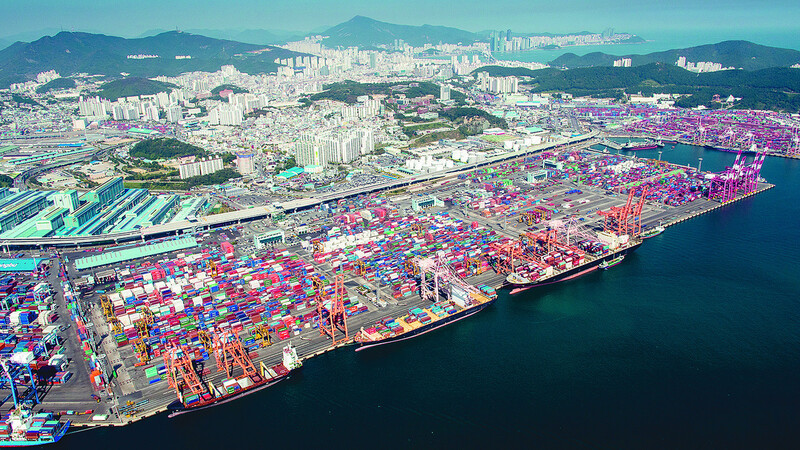BOK Report…“Changes in the branch office system, negative for exports after the financial crisis”

A view of Busan Port, which contains cargo for export. Hankyoreh material photo
While the Korean economy’s position in the international division of labor has risen markedly, its dependence on China has grown. It was analyzed that such changes in the division of labor were negatively affecting Korean exports after the global financial crisis. In a report released on the 30th, including Lee Goon-gun, manager of the Bank of Korea, in the report’The impact of the change in the participation structure of the global division of Korea on our exports’, “As the proportion of finished products in our exports declined and the proportion of intermediate goods such as materials and parts increased, Korea’s international branch office (GVC) My position has moved upward.” It is based on the definition of’upstream’ as the stage of supplying product design, raw materials, and parts by the global subsidiary industry, and’downstream’ as the stage of production, distribution, and sales of finished products.

The share of intermediate goods in exports based on customs clearance in Korea increased from 53.2% in 2012 to 63.5% in 2019. The report also said, “If you look at the’complexity index’ of products that show the product’s technology level with export items, the proportion of items with relatively high technology levels is increasing.” The’GVC participation rate’, which indicates the degree of use of the international division system, was found to be declining, centering on the rear participation level. It was analyzed that this was due to the decrease in the input of intermediate goods imported since 2012 due to the protectionism principle and the effect of the overseas relocation of domestic finished product production facilities. However, the degree of forward participation is on the rise as intermediary goods exports increase due to overseas relocation of finished product manufacturing facilities such as mobile phones and automobiles, and enhancement of quality competitiveness.

Dependence on China intensified. It is analyzed that the proportion of export intermediate goods being processed outside the country and finally to China (consumption or investment in China) is increasing, and the proportion of final goods exports to China is also increasing in terms of value added. Specifically, the proportion of intermediate goods exports to China incurred in China increased from 58.5% in 2008 to 69.9% in 2019. In the case of Vietnam, this proportion increased from 2.1% to 11.0% in the same period, and from 1.0% to 2.0% in the United States. According to the report, “As a result of analyzing the change in export growth rate by factor, the change in the global branch offices was a positive factor (1.2 percentage points) in the period before the global financial crisis (2001-2011), but negative in the period after the crisis (2011-2019). It was a factor of (-0.3% points).” Export growth rates before and after the crisis were on average 10.4% and 1.9%, respectively. The biggest factor influencing the slowdown in export growth was the slowdown in import demand due to economic slowdown in major countries. The export contribution of global final demand was 10.8 percentage points before the crisis and 1.4 percentage points after the crisis. The BOK report said, “There is a general view that the international division of companies will be weakened by securing the stability of the supply chain of intermediary goods under the influence of Corona 19, the continuation of protectionism, and the development of technology related to the Fourth Industrial Revolution.” “We need to minimize negative impacts, discover new growth engines, enhance competitiveness of our flagship exports, and diversify our supply chain for intermediate goods such as materials and parts.” By Kim Young-bae, staff reporter [email protected]

Yeosu National Industrial Complex. Provided by Yeosu City Hall
